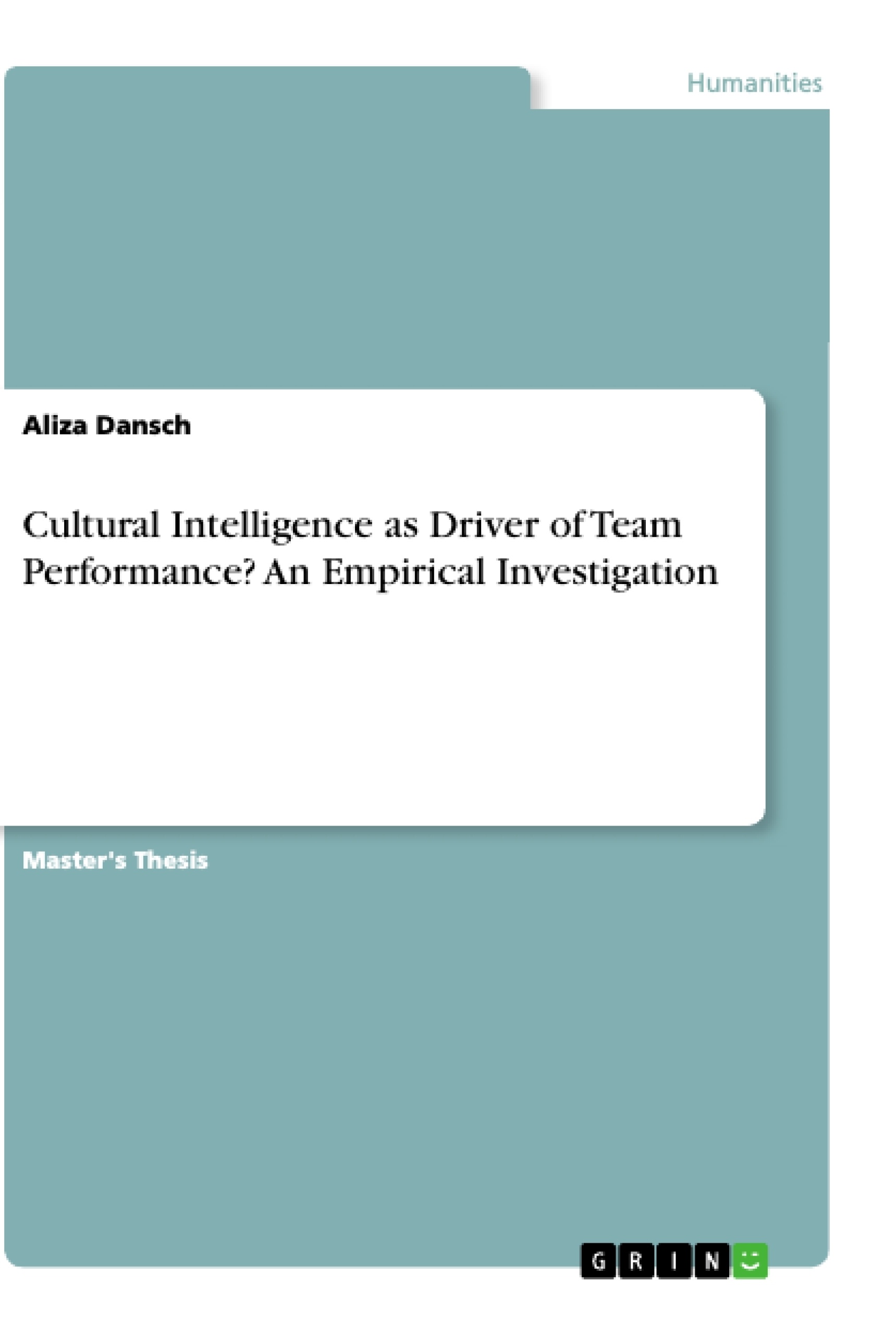This study is among the first which identified a relationship between CQ and team performance in a business setting, including a moderating role of virtuality. These findings serve to demonstrate that team performance can be enhanced through intercultural trainings corresponding to different factors of CQ, which hence, serve as a possible starting point for improved international cooperation.
The trend of technological development and increasing competition within the global economy requires more profound answers to the question of why some people are more effective in intercultural environments than others. Therefore, research about cultural intelligence (CQ), defined as the ability to cope in intercultural settings, has received increasing attention for the last years. The multidimensional construct of CQ, introduced in 2003 by Earley and Ang, analyses CQ from four different angles: Metacognitive CQ focuses on the awareness of other cultures, while cognitive CQ revolves around adaptive cultural standards. Motivational CQ addresses the interest in meeting other cultures. Finally, behavioral CQ refers to the intuitive behavior of people within intercultural interactions.
To tighten the gap of knowledge within this field of research this study is aimed at elucidating the relation between the single factors of CQ and team performance, measured on three indicators. Moreover, the moderating effect of virtuality and team identification on this relation should be examined, since international teams are often characterized by a virtual communication and less cohesion. This should give further insights on how to correctly cope with the increasing local flexibility in the business environment.
Inhaltsverzeichnis (Table of Contents)
- 1 Introduction
- 2 Theoretical background
- 2.1 Current state of research on intelligence
- 2.2 The model of cultural intelligence (CQ)
- 2.2.1 Metacognitive CQ
- 2.2.2 Cognitive CQ
- 2.2.3 Motivational CQ
- 2.2.4 Behavioral CQ
- 2.3 Team performance within the business context
- 2.3.1 Cooperation as indicator of team performance
- 2.3.2 Trust as indicator of team performance
- 2.3.3 Intrateam conflict as indicator of team performance
- 2.4 Virtuality and team identification as moderating variables
- 2.4.1 Virtuality within international teams
- 2.4.2 Team identification
- 2.5 Cultural intelligence and team performance in multicultural teams
- 2.5.1 The relation between cultural intelligence and indicators of team performance
- 2.5.2 The moderating role of virtuality
- 2.5.3 The moderating role of team identification
- 3 Methodology
- 3.1 Research design and data collection
- 3.2 Sample of the study
- 3.3 Operationalization of the measuring instruments
- 3.3.1 Expanded Cultural Intelligence Scale (E-CQS)
- 3.3.2 Registration of the dependent variables
- 3.3.2.1 CFA four-factor solution scale
- 3.3.2.2 Intragroup conflict scale
- 3.3.4 Moderating variables
- 3.3.4.1 Virtuality within the team
- 3.3.4.2 Team Identification
- 3.3.5 Controls
- 3.4 Steps within the data analysis
- 4 Results
- 4.1 Results of the descriptive analysis
- 4.2 Results from the hypothesis testing
- 4.2.1 Examination of the relation between CQ and team performance
- 4.2.2 Examination of the moderating role of virtuality
- 4.2.3 Examination of the moderating role of team identification
- 5 Discussion
- 5.1 Summary and discussion with reference to literature
- 5.2 Limitations
- 5.3 Theoretical implications for future research
- 5.4 Practical implications
- 6 References
Zielsetzung und Themenschwerpunkte (Objectives and Key Themes)
This study aims to investigate the relationship between cultural intelligence (CQ) and team performance in a business setting. It specifically focuses on the individual factors of CQ and their effect on three indicators of team performance: cooperation, trust, and emotional conflict. The study further explores the moderating effects of virtuality and team identification on this relationship. The ultimate goal is to provide insights into how to enhance team performance through intercultural trainings that address the different aspects of CQ, thereby contributing to improved international collaboration.
- Cultural Intelligence (CQ) and its individual factors
- Team Performance and its indicators (cooperation, trust, emotional conflict)
- Moderating effects of virtuality and team identification
- Intercultural training and its potential to enhance team performance
- Impact of CQ on international cooperation
Zusammenfassung der Kapitel (Chapter Summaries)
Chapter 1 introduces the topic of cultural intelligence (CQ) and its significance in today's globalized business environment. It highlights the increasing need to understand why some individuals excel in intercultural settings, thus paving the way for the study's research question. Chapter 2 provides a comprehensive theoretical background, delving into the current state of research on intelligence, particularly focusing on the model of CQ introduced by Earley and Ang (2003). This chapter thoroughly examines the four facets of CQ – metacognitive, cognitive, motivational, and behavioral – and analyzes their potential impact on team performance. Chapter 3 outlines the methodology employed in the study. This chapter explains the research design, data collection methods, and operationalization of the measuring instruments used to assess CQ, team performance, and moderating variables. Finally, Chapter 4 presents the results of the study, analyzing the relationships between CQ and team performance, as well as the moderating effects of virtuality and team identification.
Schlüsselwörter (Keywords)
The study focuses on cultural intelligence (CQ), its four components (metacognitive CQ, cognitive CQ, motivational CQ, behavioral CQ), and their relationship to team performance in a business context. The research examines the influence of CQ on team performance indicators such as cooperation, trust, and emotional conflict. It also explores the moderating roles of virtuality and team identification in this relationship. The study's findings contribute to the field of intercultural training and offer valuable insights into enhancing international collaboration.
- Citar trabajo
- Aliza Dansch (Autor), 2019, Cultural Intelligence as Driver of Team Performance? An Empirical Investigation, Múnich, GRIN Verlag, https://www.grin.com/document/972520



